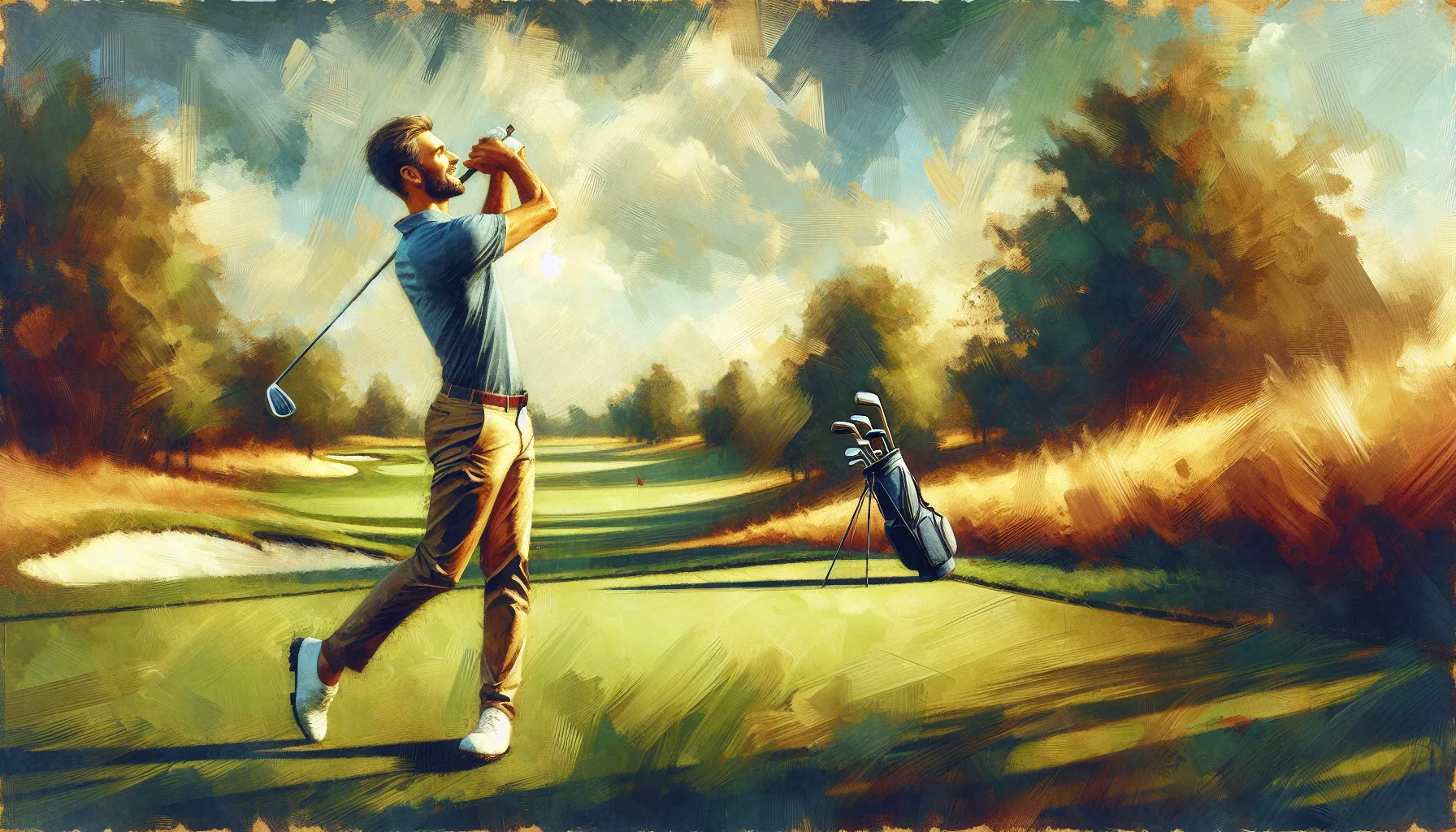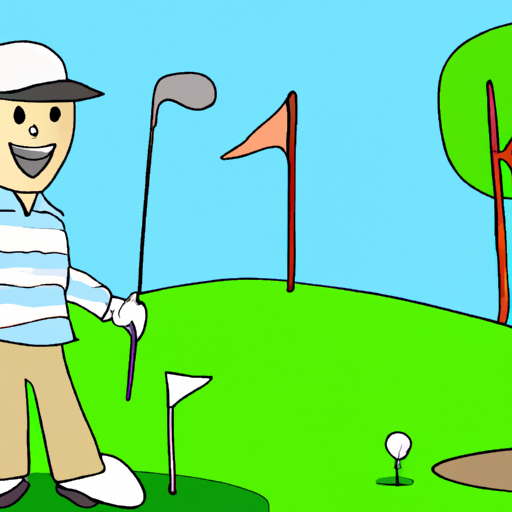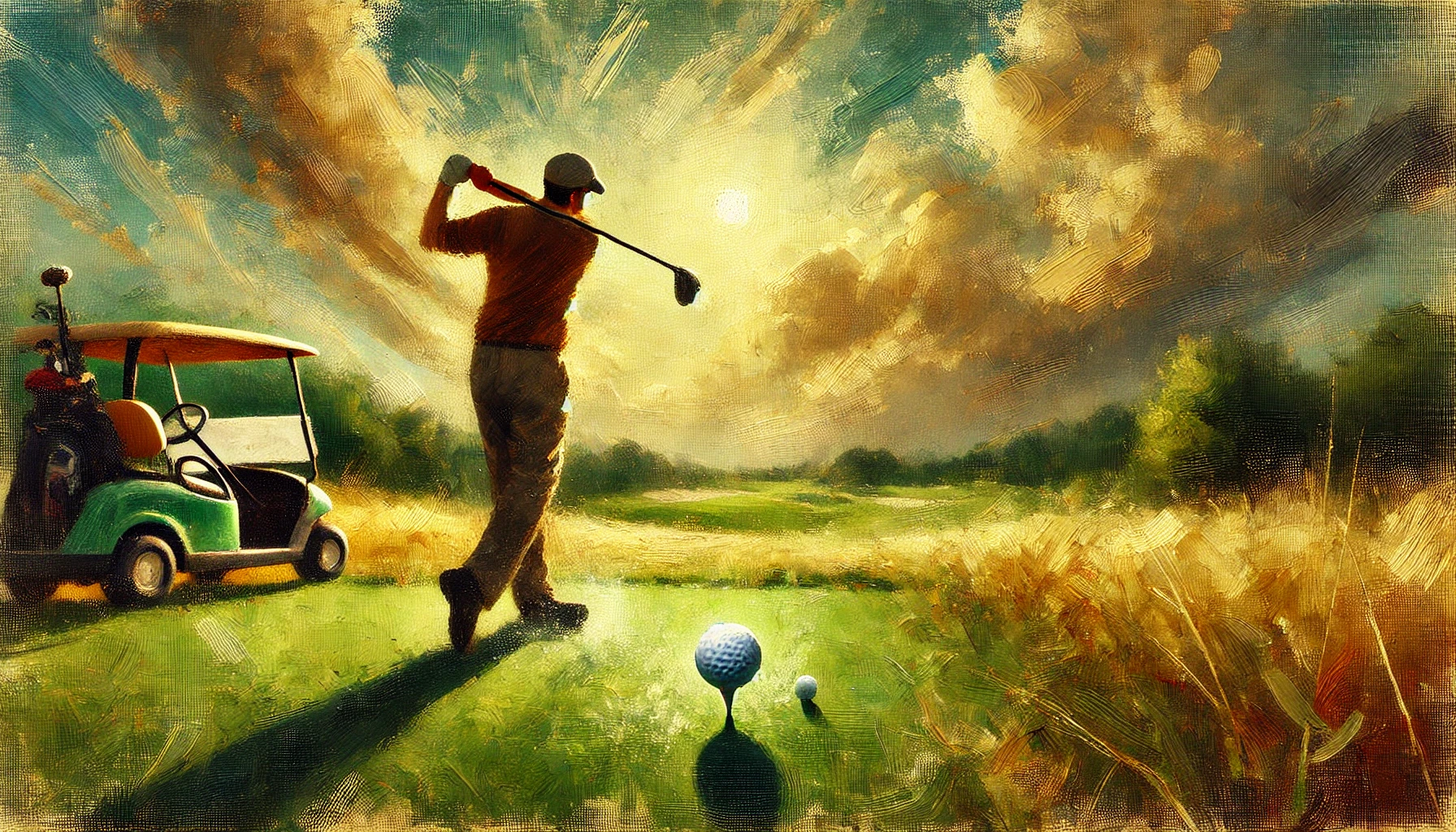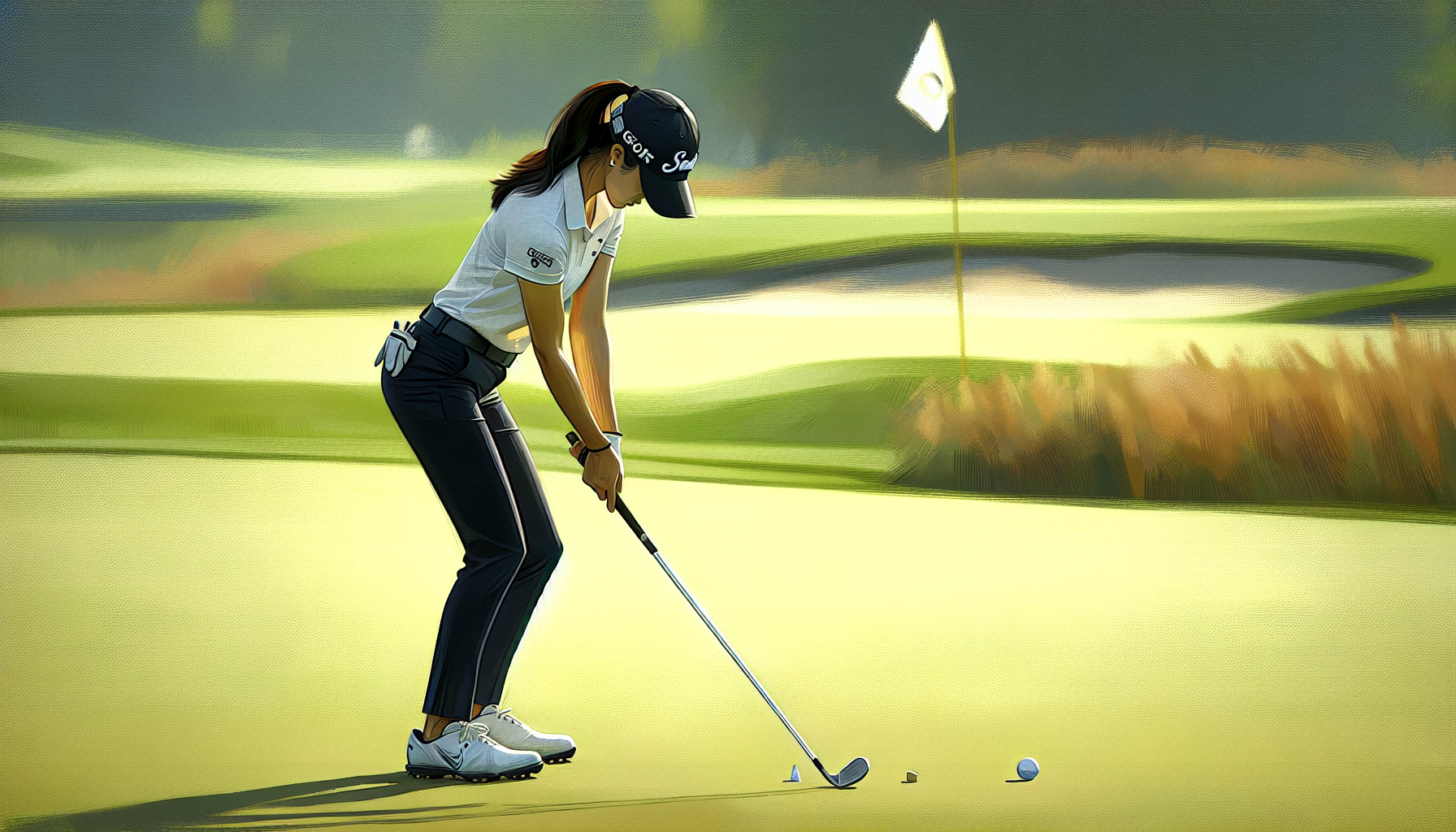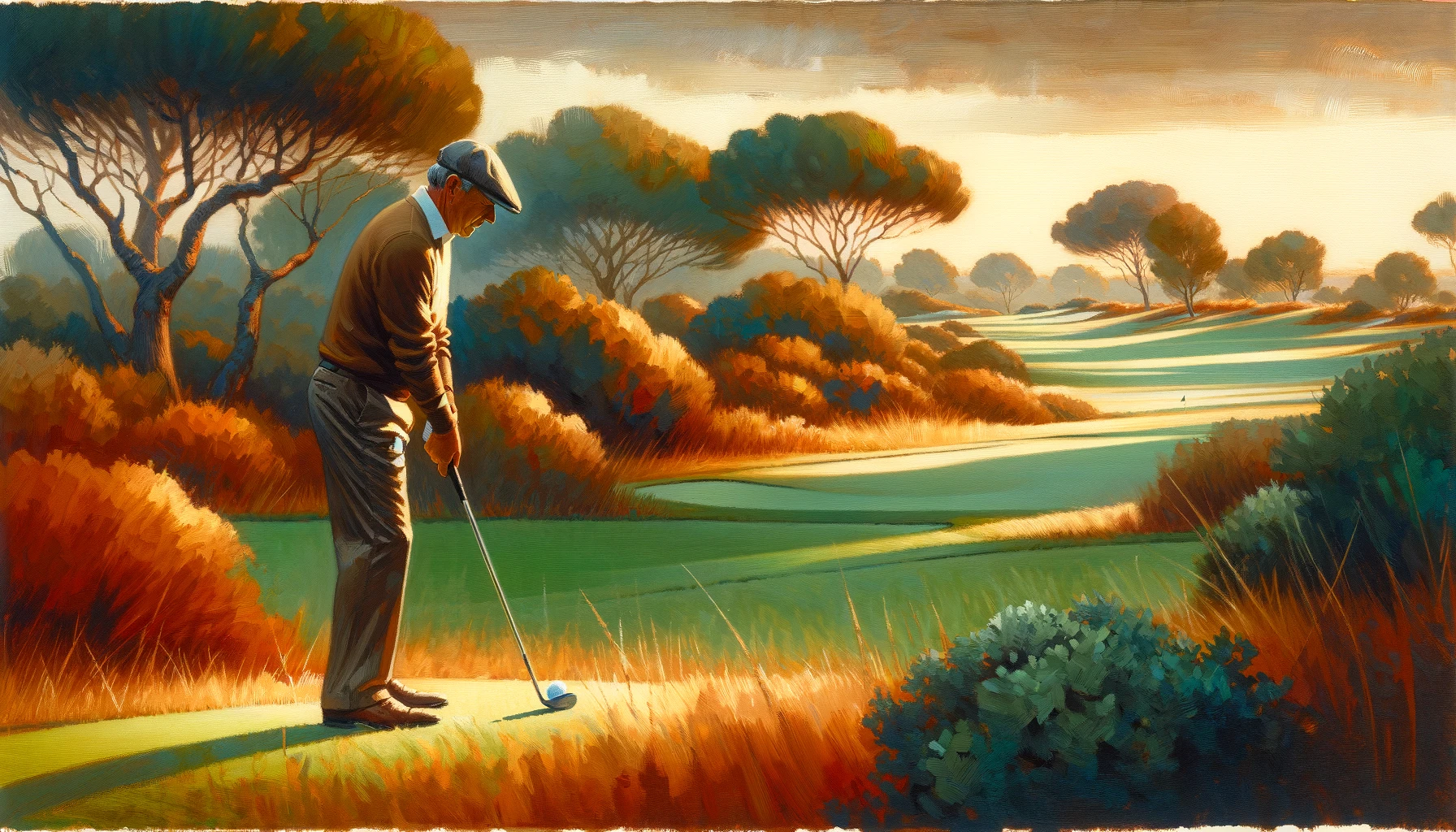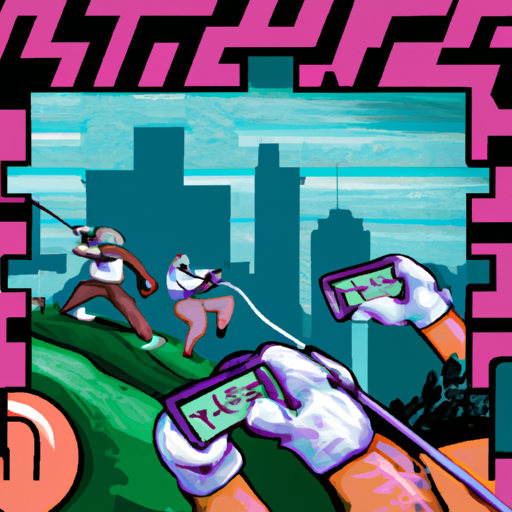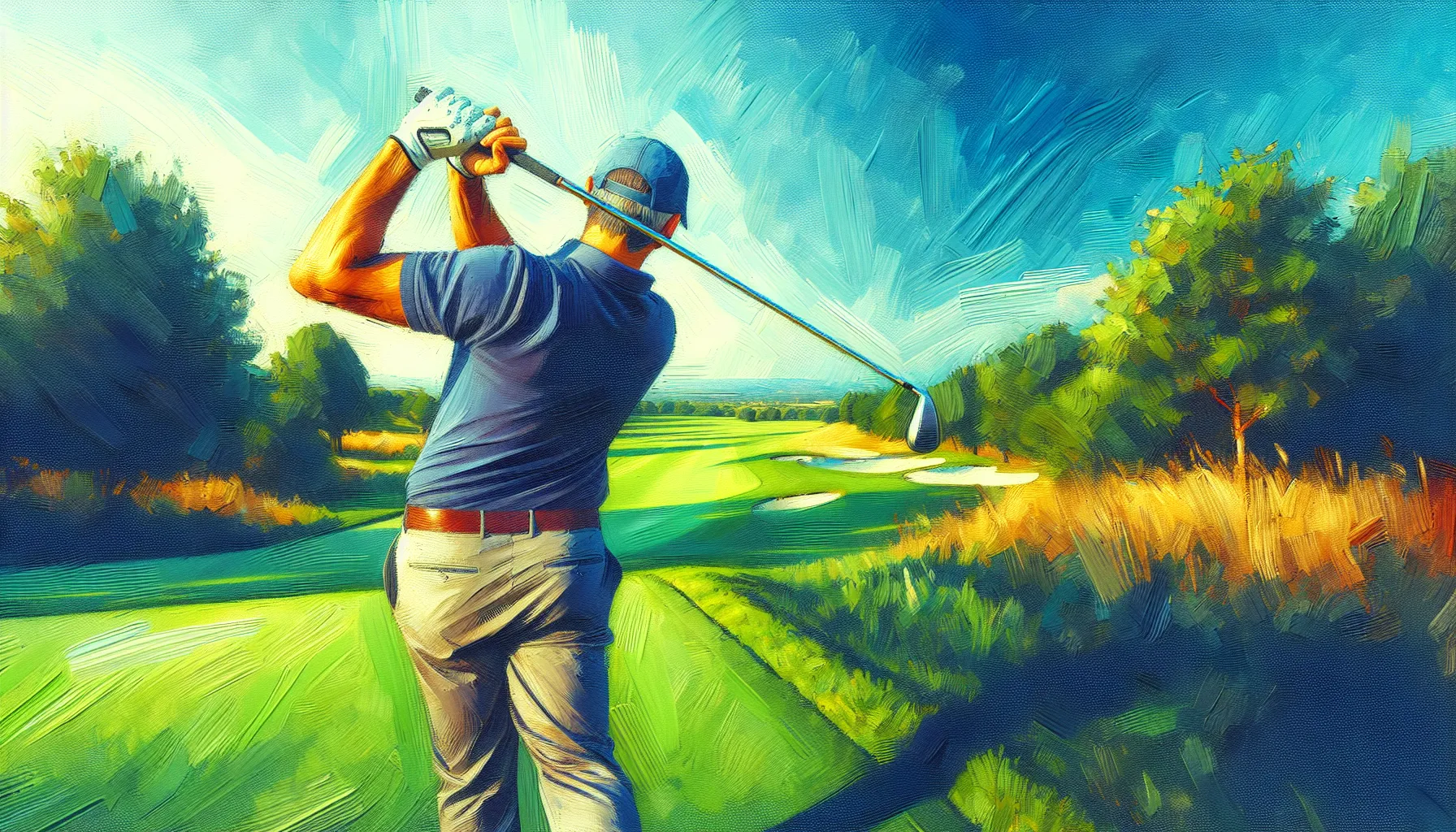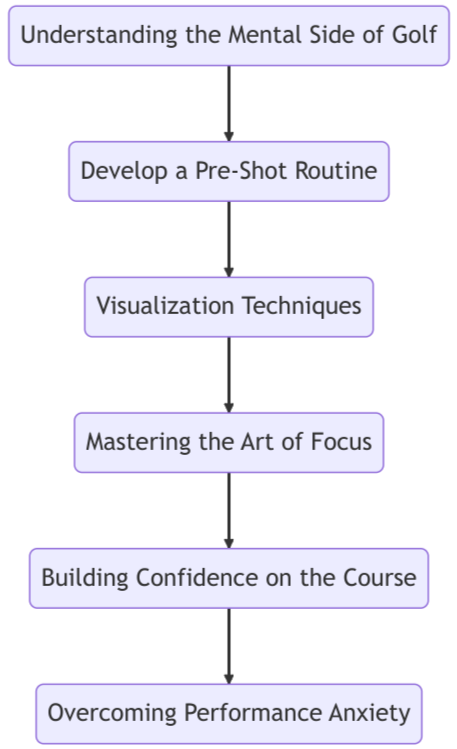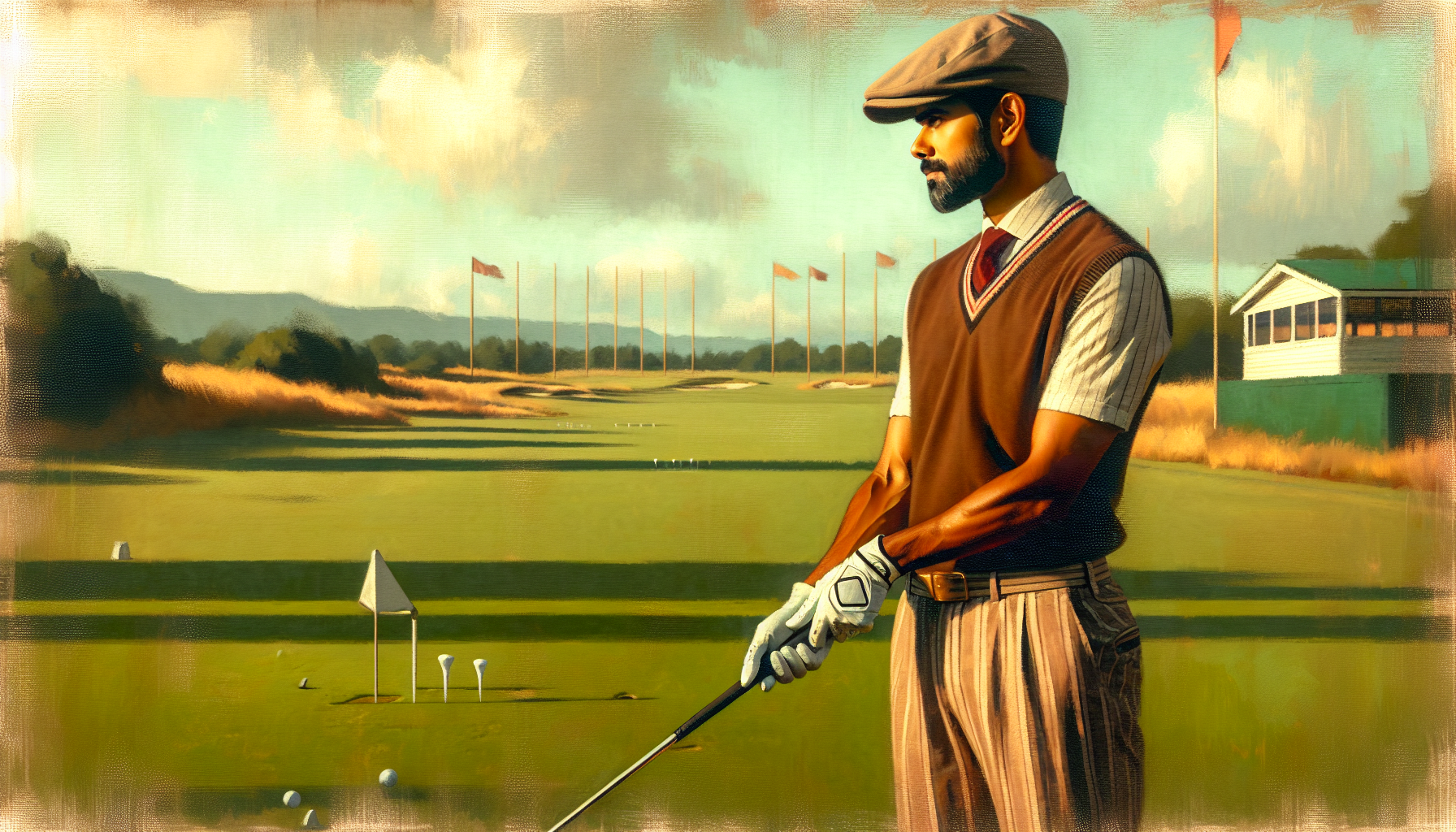Mastering the Game: A Comprehensive Guide on How to Get Better at Golf
Struggling to improve your golf game? You're not alone. Many golfers face the same challenge, but the solution is within reach. Our comprehensive guide on how to get better at golf offers proven strategies, personal anecdotes, and insights to help you unlock your potential. Whether you're a beginner or an experienced player, our tips will enhance your skills, lower your handicap, and make the game more enjoyable. Don't miss the key takeaways and the FAQ section at the bottom of the article if you're in a hurry. Start your journey to golfing excellence today!
Golf is more than just a game; it's a passion, a challenge, and a way to connect with others and yourself. Whether you're a seasoned pro or just starting, the quest to improve your game is a journey filled with excitement and frustration. That's why I've created this guide, "Mastering the Game: A Comprehensive Guide on How to Get Better at Golf". It's designed for you, the golfer who's eager to take your game to the next level.
You might be wondering, what makes this guide different? Well, I've been where you are, struggling with my swing, confused about the right equipment, and seeking the secrets to golfing success. I've spent years studying the game, learning from experts, and practicing on the greens. Now, I want to share my insider information, wickedly effective techniques, and untapped resources with you. This guide is packed with answers to the questions you've been dying to know.
Imagine standing on the tee, confident in your swing, knowing that you have the skills and knowledge to play your best game ever. Picture yourself sinking putts with pinpoint accuracy, driving with tremendous power, and enjoying every moment on the course. This guide is your ticket to that golfing heaven. From mastering the art of the swing to choosing the right clubs and developing a winning mindset, it's all here. And it's written just for you, in plain English, with step-by-step instructions and personal anecdotes.
So, are you ready to transform your golf game? Are you ready to tap into the secrets that can make you the golfer you've always wanted to be? Dive into this guide, and let's embark on this journey together. Whether you're looking to shave strokes off your handicap or discover the joy of golf for the first time, this guide is your roadmap to success. Let's get started, and let me show you how to make golf not just a game, but a part of who you are.
Isn't that exciting? Now, let's move on and start this incredible journey together!
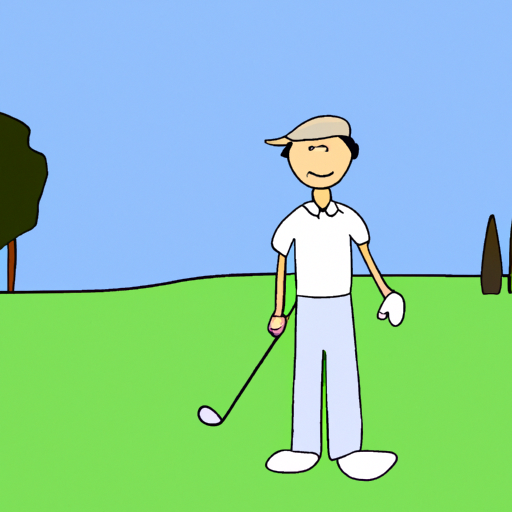 Unleashing the perfect swing - a moment of triumph!
Unleashing the perfect swing - a moment of triumph!How Can I Improve My Golf Swing?
Ah, the golf swing. It's the heart and soul of the game, and yet, it can be one of the most challenging aspects to master. Let's dive into this together, and I'll share with you not only the techniques to improve your swing but also a personal story that I hope will resonate with you.
The Struggle: Years ago, I was just like you, struggling with my golf swing. I would stand on the tee, feeling a mixture of excitement and dread. My swings were inconsistent, sometimes powerful and accurate, but often weak and off-target. It was frustrating, to say the least, and it seemed like no matter what I tried, I couldn't crack the code.
Seeking Help: Determined to improve, I sought the help of professionals, read books, watched videos, and practiced relentlessly. But the more I tried to fix my swing, the more confusing it became. I was lost in a sea of mumbo-jumbo, conflicting advice, and a growing sense of despair.
The Breakthrough: The breakthrough came when I realized that I needed to go back to the basics. I needed to understand the fundamentals of the golf swing, the mechanics, and the rhythm. I began to focus on simple, easy-to-implement techniques, and slowly but surely, my swing began to improve.
Understanding the Basics: The key to improving your golf swing is understanding the basic principles. Your stance, grip, alignment, and follow-through are all crucial components. By focusing on these elements and practicing them regularly, you can create a consistent and powerful swing.
Personalized Approach: Remember, every golfer is unique. What works for one person may not work for another. It's essential to find what feels comfortable and natural for you. Experiment with different techniques and find what resonates with your body and style.
Technology and Tools: Nowadays, there are incredible tools and technology available to help you analyze and improve your swing. From swing analyzers to high-tech simulators, you can get detailed insights into your swing and make precise adjustments.
Mental Aspect: Golf is as much a mental game as it is physical. Developing a positive mindset, focusing on the process rather than the outcome, and learning to handle pressure are all part of improving your swing.
Life Now: Today, my golf swing is something I'm proud of. It's not perfect, but it's consistent, powerful, and reflects the hard work and dedication I've put into the game. Golf has become more than just a hobby; it's a passion and a way to connect with friends, challenge myself, and enjoy the beauty of the outdoors.
Your Journey: Your journey to improving your golf swing may be filled with ups and downs, but remember, persistence and patience are key. Learn from your mistakes, celebrate your successes, and never stop striving to be better.
Let's Get Started: So, are you ready to take your golf swing to the next level? Together, we can work on the techniques, mindset, and strategies that will make you a better golfer. Let's embrace the challenge, enjoy the process, and see where this journey takes us.
After all, you're ready for success finally, aren't you? Let's move on to the next step and continue this exciting adventure!
What Are the Best Drills to Practice for Golf?
Golf is a game of precision, patience, and practice. And speaking of practice, I'm sure you're eager to know the best drills that can take your game to the next level. I've been there, spending countless hours on the range, trying to figure out the most effective ways to practice. Let's explore some of the best drills together, and I'll share some personal insights along the way.
Putting Drills:
- Clock Drill: Place 12 balls around the hole like the hours on a clock, and try to sink each one. This helps with distance control and accuracy.
- Gate Drill: Set up two tees just wider than your putter's head and practice putting through the "gate." This helps with alignment and stroke path.
- Personal Anecdote: I used to struggle with short putts until I started the Gate Drill. It was a game-changer for my confidence on the greens.
Chipping Drills:
- Ladder Drill: Chip balls to different distances, aiming for specific targets. This helps with distance control.
- One-Handed Drill: Practice chipping with only one hand to improve feel and control.
- Personal Insight: The One-Handed Drill taught me to trust my instincts and feel rather than overthinking the shot.
Swing Drills:
- Towel Drill: Place a towel under your armpits and swing without dropping it. This helps with connection and body rotation.
- Alignment Stick Drill: Use alignment sticks to ensure proper alignment and swing path.
- Personal Story: The Alignment Stick Drill helped me correct a persistent slice that had been plaguing my game.
Bunker Drills:
- Line Drill: Draw a line in the sand and practice hitting it with your sand wedge. This helps with hitting the correct spot behind the ball.
- Bucket Drill: Practice hitting out of a bunker into a bucket or target area. This helps with accuracy and control.
Mental Drills:
- Visualization: Practice visualizing successful shots and putts.
- Pressure Situations: Create pressure scenarios in practice to simulate real-game situations.
- Personal Experience: Visualization has been a powerful tool for me, especially in pressure situations. Imagining success helps me achieve it.
Fitness Drills:
- Core Exercises: Strengthening your core can improve stability and power in your swing.
- Flexibility Drills: Stretching and flexibility exercises can enhance your range of motion.
Technology-Assisted Drills:
- Swing Analyzers: Utilize technology to get detailed feedback on your swing.
- Simulators: Practice in simulated real-course conditions.
Game-Like Drills:
- Match Play: Practice with friends in match play scenarios.
- Scored Rounds: Keep score during practice to simulate real-game pressure.
Consistency and Routine:
- Develop a consistent practice routine.
- Focus on quality over quantity.
Final Thoughts:
- Practice with purpose and intention.
- Don't be afraid to seek professional guidance if needed.
Remember, practice makes permanent, not perfect. Focus on the right techniques.
So read on, my friend. We've covered some of the best drills, but there's more to explore. Let's continue this journey together, and I promise, with dedication and the right approach, you'll see tremendous improvement in your game. After all, you know what this means, right? It's time to take your golfing skills to new heights!
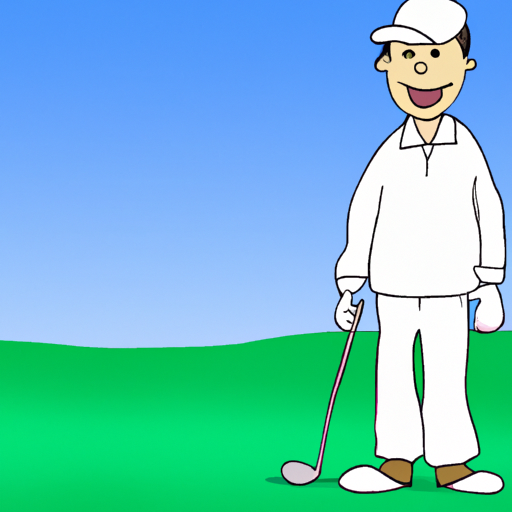 Focus and determination - the keys to golfing success!
Focus and determination - the keys to golfing success!How Can I Increase My Driving Distance in Golf?
Ah, the quest for more driving distance! It's a goal that almost every golfer, including myself, has pursued at some point. I remember the days when I was struggling to get those extra yards off the tee, feeling frustrated and defeated. But through perseverance, practice, and some valuable lessons, I managed to find the keys to unlocking more distance. Let me share with you what I've learned.
Understanding the Basics:
- Grip: Hold the club with a relaxed grip, allowing for more wrist hinge and power.
- Stance: A wider stance can provide a stable base for a powerful swing.
- Alignment: Proper alignment with the target ensures that your energy is directed where it should be.
The Importance of Flexibility:
Flexibility in your shoulders, hips, and back is crucial for a full and powerful swing. I used to overlook this aspect until I realized how it was limiting my distance. Regular stretching and warm-up exercises became a game-changer for me.
Building Strength:
Strength, especially in the core and legs, contributes to driving power. Incorporating strength training into my routine helped me generate more force in my swing, translating to more distance.
Swing Technique:
The swing technique is vital. Focusing on a smooth and controlled backswing, followed by a fast and explosive downswing, can add yards to your drive. I worked with a coach to refine my swing, and the improvement was remarkable.
Equipment Considerations:
Using the right club with the right specifications for your swing can make a significant difference. I once switched to a driver with a more suitable shaft flex, and it instantly added distance to my drives.
Mental Approach:
Believe it or not, your mindset plays a role in your driving distance. I learned to visualize successful long drives, and it helped me perform better on the course. Confidence can indeed translate into performance.
Practicing with Purpose:
Practice doesn't just mean hitting balls aimlessly. I started to practice with specific drills and goals, focusing on the aspects of my game that needed improvement. This targeted approach accelerated my progress.
Monitoring and Adjusting:
Continuously monitoring your performance and making necessary adjustments is key. I kept track of my driving statistics and worked on areas that needed improvement. This ongoing refinement kept me moving forward.
Learning from Others:
Don't hesitate to learn from others. I often watched professional golfers and tried to emulate their techniques. Sometimes, a simple tip from a fellow golfer can lead to a breakthrough.
Enjoy the Process:
Lastly, enjoy the process. Increasing driving distance is a journey, not a destination. I found joy in the small improvements and stayed patient and persistent.
Increasing your driving distance in golf is a multifaceted challenge that requires a combination of physical preparation, technical skill, mental strength, and the right equipment. I hope my experiences and insights help you on your journey to hitting longer drives.
Remember, it's not just about raw power; it's about the intelligent application of that power. And here's why: the more you understand and apply these principles, the more you'll see those drives flying farther and straighter.
Isn't that exciting? Onward to the next step in our golfing adventure!
What Are the Essential Golf Equipment for Beginners?
Starting my golf journey was both exciting and overwhelming. The game of golf seemed simple enough, but I quickly realized that having the right equipment was crucial.
I remember walking into a golf shop for the first time, feeling lost among the endless options of clubs, balls, and accessories. It was a struggle to figure out what I truly needed as a beginner. But with time, research, and some friendly advice, I managed to gather the essential equipment that set me on the path to becoming a better golfer.
Here's what I learned:
Golf Clubs:
- Driver: For long-distance shots off the tee.
- Irons: A set of irons (usually 3-9) for various distances and situations.
- Wedge: Essential for short game and getting out of bunkers.
- Putter: For putting on the green.
- Personal Anecdote: I started with a beginner's set that included all the necessary clubs. It was affordable and perfect for learning the basics.
Golf Balls:
As a beginner, it's wise to have plenty of golf balls as losing them is common.
- Personal Anecdote: I used to buy recycled or lower-cost balls to practice without worrying about losing them.
Golf Bag:
A good golf bag helps you organize and carry your clubs and accessories.
- Personal Anecdote: I chose a stand bag, which was lightweight and easy to carry around the course.
Tees:
You'll need tees to elevate the ball for your drives.
- Personal Anecdote: I kept a good supply of tees in my bag, as they can break or get lost easily.
Golf Gloves:
A golf glove helps with grip and reduces blisters.
- Personal Anecdote: Wearing a glove made a noticeable difference in my grip and comfort.
Golf Shoes:
Golf shoes provide stability and traction during your swing.
- Personal Anecdote: Investing in a good pair of golf shoes improved my balance and swing stability.
Rain Gear and Umbrella:
Being prepared for unexpected weather is wise.
- Personal Anecdote: I learned the hard way when I was caught in a sudden downpour without an umbrella.
Range Finder or GPS Device:
These devices help you gauge distances on the course.
- Personal Anecdote: I initially used a smartphone app, which was a cost-effective way to get yardages.
Sunscreen and Hat:
Protecting yourself from the sun is essential.
- Personal Anecdote: I always kept sunscreen in my bag to avoid sunburn during long rounds.
A Positive Attitude and Willingness to Learn:
Perhaps the most crucial equipment of all.
- Personal Anecdote: Embracing mistakes and learning from them was key to my growth in golf.
Gathering the essential golf equipment as a beginner was a journey of discovery for me. It taught me not only about the game but also about patience, research, and the value of asking for advice. Today, as I look back, I see how those early choices in equipment laid the foundation for my love of golf and my continuous improvement in the game. The right tools, combined with a positive attitude, can indeed set you on the path to success in golf and in life.
So read on, my friend, as we delve deeper into the world of golf. After all, you're ready for success finally, aren't you?
How Do I Choose the Right Golf Clubs?
Choosing the right golf clubs was one of the most daunting tasks I faced when I started playing golf. I remember standing in the golf store, surrounded by shiny clubs of various shapes and sizes, feeling utterly confused. Let me share with you how I navigated this challenge and found the perfect set of clubs for my game.
Understanding My Needs: As a beginner, I knew I didn't need a full set of 14 clubs. I started with a basic set that included a driver, a couple of irons, a wedge, and a putter. This was more than enough to get me started, and it didn't break the bank.
Considering My Skill Level: I was honest with myself about my skill level. I knew I needed clubs that were forgiving and designed for beginners. I wasn't swayed by the professional-level clubs that looked appealing but were not suitable for my game.
Getting Fitted: One of the best decisions I made was to get a professional fitting. The store's expert measured my height, arm length, and swing speed to recommend the right club length, shaft flex, and clubhead design. It made a significant difference in how the clubs felt and performed.
Choosing the Right Shaft Material: I learned that shafts come in different materials like steel and graphite. As a beginner, I opted for graphite shafts, which were lighter and helped me generate more swing speed. I once tried a friend's steel-shafted club and immediately felt the difference in weight and control.
Picking the Right Clubhead: I was advised to choose clubs with a larger clubhead and a cavity back design. These features provided more forgiveness on off-center hits, which was essential for a beginner like me.
Setting a Budget: Golf clubs can be expensive, especially the top brands. I set a realistic budget and found a quality beginner's set that didn't cost a fortune. I was tempted by a high-end set on sale but realized that it was still beyond my needs and budget.
Asking for Recommendations: I spoke to friends who played golf and asked for their advice. Their insights and recommendations were invaluable in guiding my decision. A friend suggested a particular brand known for its beginner-friendly clubs, and it turned out to be a perfect fit for me.
Thinking About the Future: While I chose clubs suitable for my beginner status, I also considered how they would serve me as I improved. I looked for clubs that offered some room for growth without being too advanced for my current level.
Testing the Clubs: Before making the final decision, I tested the clubs at the store's driving range. Feeling the clubs in my hands and seeing how they performed with my swing was the ultimate test. I was torn between two sets, but testing them helped me feel confident in my final choice.
Trusting My Instincts: Ultimately, I trusted my instincts and chose the clubs that felt right for me. They were comfortable in my hands, suited my budget, and aligned with my skill level.
Choosing the right golf clubs was a journey filled with learning, exploration, and self-discovery. It taught me the importance of research, professional guidance, and trusting my instincts. Today, as I swing those very clubs on the golf course, I feel a sense of satisfaction knowing that they were the right choice for me. And you know what? You can make the right choice too.
So read on, as we continue to explore the fascinating world of golf. You know what this means, right? Your perfect set of golf clubs is just around the corner!
What Are the Mental Strategies for Playing Better Golf?
Golf is as much a mental game as it is a physical one. I've learned this the hard way, struggling on the course, letting frustration get the best of me, and watching my game fall apart. But over time, I've developed mental strategies that have not only improved my golf game but also enriched my life. Here's what I've learned:
Setting Clear Goals:
- Short-Term Goals: Focus on improving specific aspects of the game, like putting or chipping.
- Long-Term Goals: Aim for broader achievements, such as lowering your handicap or playing in a tournament.
- Personal Anecdote: I once set a goal to reduce three strokes off my handicap in a season, and it kept me motivated and focused.
Developing a Pre-Shot Routine:
- Visualization: Picture the shot in your mind before executing it.
- Breathing: Take deep breaths to calm nerves.
- Alignment: Ensure proper alignment with the target.
- Personal Anecdote: Creating a consistent pre-shot routine helped me gain confidence and consistency in my shots.
Managing Emotions:
- Stay Positive: Focus on what you can control and let go of mistakes.
- Avoid Anger: Learn to move on from a bad shot without letting it affect the next one.
- Personal Anecdote: I once lost a game due to anger after a bad shot; it was a lesson in emotional control.
Building Concentration and Focus:
- Mindfulness: Be present in the moment and avoid distractions.
- Concentration Drills: Practice focusing on specific targets or visual cues.
- Personal Anecdote: Mindfulness practices off the course improved my focus on the course.
Embracing Pressure:
- Simulate Pressure: Practice under conditions that mimic tournament pressure.
- Embrace Challenges: View pressure as an opportunity to grow.
- Personal Anecdote: Playing in local tournaments helped me learn to handle pressure better.
Creating a Positive Mindset:
- Affirmations: Use positive affirmations to boost confidence.
- Positive Self-Talk: Encourage yourself as you would a friend.
- Personal Anecdote: Replacing negative thoughts with positive affirmations turned around a game I was losing.
Understanding the Course:
- Study the Layout: Know the course and its challenges.
- Strategize: Plan your shots based on the course layout.
- Personal Anecdote: Studying the course layout before a tournament gave me a strategic edge.
Practicing Patience:
- Acceptance: Accept that golf is a game of imperfections.
- Persistence: Keep working on your game, even when progress is slow.
- Personal Anecdote: Patience in improving my putting paid off in the long run.
Seeking Professional Help if Needed:
- Coaching: Consider professional coaching to work on mental aspects.
- Books and Resources: Read books on golf psychology.
- Personal Anecdote: A session with a mental coach helped me overcome a performance slump.
Reflecting and Learning:
- Analyze Performances: Reflect on what went well and what needs improvement.
- Keep a Journal: Document your thoughts, feelings, and progress.
- Personal Anecdote: Keeping a golf journal helped me track my progress and learn from my experiences.
The mental strategies I've shared have been game-changers for me. They've not only helped me play better golf but have also taught me valuable life lessons in focus, patience, and resilience. And here's why these strategies can work for you too. They're not just about golf; they're about developing a mindset for success in anything you do.
So read on, and let's continue this journey together. After all, you're ready for success finally, aren't you?
How Can I Play Golf on a Budget?
Golf, often perceived as an expensive sport, can indeed be a financial challenge. I remember when I first started playing golf, the costs of equipment, green fees, and memberships seemed overwhelming. I was passionate about the game but was struggling to afford it. It was a time when I had to make some tough financial decisions, and golf seemed like a luxury I couldn't afford. But my love for the game didn't wane, and I found ways to play golf on a budget.
Here's my journey and how you can do it too:
Buying Used Equipment:
- My Struggle: I was initially obsessed with having the latest and most expensive clubs, thinking they would make me a better player.
- My Solution: I discovered that buying used or older models of clubs could save me a significant amount of money without sacrificing quality.
- Life Now: I play with a mix of used and new equipment, focusing more on my skills than the brand of my clubs.
Finding Affordable Courses:
- My Struggle: Playing at prestigious courses was draining my wallet.
- My Solution: I started exploring municipal and public courses, which offered reasonable rates and still provided a great golfing experience.
- Life Now: I enjoy discovering hidden gems among budget-friendly courses and appreciate the game's accessibility.
Utilizing Off-Peak Times:
- My Struggle: I used to play only on weekends, paying premium rates.
- My Solution: By playing during off-peak hours, such as weekday afternoons, I found discounted rates.
- Life Now: I've adjusted my schedule to take advantage of these times, enjoying quieter courses and saving money.
Practicing at Home:
- My Struggle: Constantly going to the driving range was costly.
- My Solution: I set up a small practice area at home to work on my putting and chipping.
- Life Now: I've found joy in practicing at my convenience, and it's improved my short game.
Joining Golfing Communities:
- My Struggle: I felt isolated as a budget-conscious golfer.
- My Solution: Joining local golf communities and online forums helped me find playing partners and share cost-saving tips.
- Life Now: I've made friends who share my budget-friendly approach to golf, and we enjoy the game together.
Investing in Lessons Wisely:
- My Struggle: I thought I needed constant professional coaching.
- My Solution: I invested in a few quality lessons and then focused on self-practice, using online resources.
- Life Now: I've learned to be self-reliant in improving my game, using professional guidance when necessary.
Walking Instead of Riding:
- My Struggle: I used to always rent a golf cart.
- My Solution: I started walking the course, saving on cart fees.
- Life Now: Walking has become a cherished part of my golf experience, adding to my enjoyment and fitness.
Being Selective with Golf Apparel:
- My Struggle: I was spending too much on golf-specific clothing.
- My Solution: I realized that comfortable and appropriate athletic wear was sufficient.
- Life Now: I dress smartly without overspending on branded golf apparel.
Avoiding Unnecessary Gadgets:
- My Struggle: I was drawn to the latest golf gadgets and accessories.
- My Solution: I learned to differentiate between what's essential and what's merely a luxury.
- Life Now: I use only what truly benefits my game, avoiding unnecessary expenses.
Embracing the Journey:
- My Struggle: I felt pressured to conform to golf's expensive image.
- My Solution: I embraced golf as a game for everyone and focused on enjoying it within my means.
- Life Now: I play golf with a sense of freedom and joy, unburdened by financial stress.
My journey taught me that golf doesn't have to be a financial burden. It's a game that can be enjoyed at any budget, and the lessons I learned extended beyond the course. I became more resourceful, mindful of my spending, and focused on what truly mattered. And here's the best part: these lessons can apply to you too.
So read on, and let's explore more ways to enjoy this beautiful game. After all, what more could we ask for? Hold on! We're not done yet.
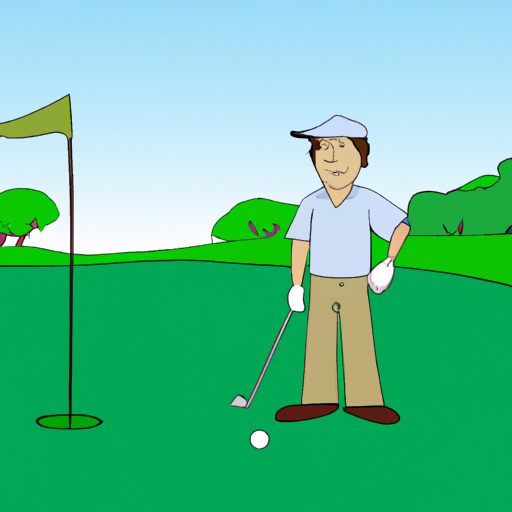 The right equipment makes all the difference!
The right equipment makes all the difference!What Are the Best Ways to Learn Golf as a Beginner?
Starting to learn golf can be an exciting yet daunting task. I remember when I first picked up a golf club, feeling both thrilled and overwhelmed. The game seemed complex, and I didn't know where to begin. But over time, I found effective ways to learn and improve, turning my initial confusion into a lifelong passion.
Here's a guide to help you, as a beginner, navigate the world of golf, just as I did:
Start with the Basics:
- Grip, Stance, and Posture: Learn the fundamental techniques. I began by practicing my grip, stance, and posture, which laid the foundation for everything else.
- Understanding the Game: Familiarize yourself with the rules, terminology, and etiquette of golf. I found this knowledge essential in feeling comfortable on the course.
Invest in Lessons:
- Professional Coaching: Consider taking lessons from a certified golf instructor. I took a few lessons initially, and the personalized guidance accelerated my learning.
- Group Lessons: If private lessons are too costly, group lessons can be a fun and affordable alternative.
Use Online Resources:
- Video Tutorials: There are countless free and paid video tutorials online. I often watched videos to understand different techniques and drills.
- Golf Forums and Communities: Engaging with online golf communities helped me connect with other beginners and learn from their experiences.
Practice Regularly:
- Driving Range: Spend time at the driving range to practice your swing. I made it a habit to visit the range regularly, and the consistent practice paid off.
- Putting and Chipping Areas: Don't neglect the short game. I used to spend hours on the putting green, and it significantly improved my scores.
Play on Different Courses:
- Start with Easier Courses: Begin with less challenging courses to build confidence. I remember playing my first full round on a forgiving course, and it was a great introduction.
- Gradually Increase Difficulty: As you improve, try playing on more challenging courses. This gradual progression helped me develop my skills without feeling overwhelmed.
Choose the Right Equipment:
- Beginner-Friendly Clubs: Invest in clubs designed for beginners. I started with a basic set, and it was more than enough for my initial learning phase.
- Avoid Over-Spending: Don't feel pressured to buy the most expensive equipment. I learned that skill development was more important than having the latest gear.
Analyze and Learn from Mistakes:
- Keep Track of Your Progress: I used to keep a journal of my rounds, noting what went well and what needed improvement.
- Learn from Others: Watching and playing with more experienced golfers provided valuable insights. I often asked for feedback and learned from their techniques.
Incorporate Fitness and Flexibility Training:
- Golf-Specific Exercises: I incorporated exercises to improve my strength and flexibility, enhancing my overall performance.
- Warm-Up and Cool Down: Proper warm-up and cool-down routines prevented injuries and kept me feeling great on the course.
Set Realistic Goals and Be Patient:
- Set Achievable Targets: I set small, attainable goals that kept me motivated and focused.
- Embrace the Learning Curve: Golf is a complex game, and progress may be slow at times. I learned to be patient with myself and enjoy the journey.
Enjoy the Game:
- Have Fun: Above all, remember to have fun. I found joy in the learning process, the challenges, the successes, and even the failures.
- Build Friendships: Golf is a social game. I made lasting friendships on the course, and those connections enriched my golfing experience.
Learning golf as a beginner is a rewarding journey filled with ups and downs. My personal experience taught me that with the right approach, dedication, and a love for the game, you can turn those initial uncertainties into a fulfilling hobby or even a lifelong passion.
So grab your clubs, head to the course, and embrace the beautiful game of golf. You're in for an incredible adventure!
How Can I Reduce My Handicap in Golf?
Ah, the elusive quest to reduce one's handicap in golf. It's a journey I've been on myself, and I can tell you, it's both challenging and rewarding. Let me share with you the strategies and insights I've gained over the years, which have helped me lower my handicap and enjoy the game even more.
Understand Your Handicap: First and foremost, it's essential to understand what your handicap is and how it's calculated. Your handicap is a numerical measure of your potential ability, and it's there to level the playing field. When I first started focusing on reducing my handicap, I made sure to track my scores accurately and understand the specific areas where I needed improvement.
Focus on Your Short Game: I used to be obsessed with hitting long drives, but I soon realized that my short game was where I could make the most significant improvements. By practicing putting, chipping, and pitching, I was able to shave strokes off my scores. The short game is often where matches are won or lost.
Invest in Lessons: Taking lessons from a professional golf instructor was a game-changer for me. They were able to analyze my swing, identify weaknesses, and provide targeted drills to improve. Even a few lessons can make a substantial difference.
Play with Better Golfers: One of the best pieces of advice I received was to play with golfers who were better than me. By doing so, I was able to learn from their techniques, strategies, and mental approach to the game. It pushed me to improve and strive for excellence.
Analyze Your Rounds: After each round, I made it a habit to analyze my performance. I looked at where I succeeded and where I struggled. By understanding my mistakes, I was able to focus my practice sessions on those specific areas. This targeted approach helped me improve faster.
Use the Right Equipment: Having the right clubs for your swing and playing style can make a significant difference. I took the time to get fitted for clubs that matched my game, and it paid off. The right equipment can enhance your strengths and minimize your weaknesses.
Work on Your Mental Game: Golf is as much a mental game as it is physical. I worked on developing a strong mental approach, focusing on concentration, patience, and emotional control. By staying calm under pressure and maintaining a positive attitude, I found that I played more consistently.
Set Realistic Goals: Reducing your handicap is a gradual process. I set realistic and achievable goals, focusing on incremental improvements. Celebrating small successes along the way kept me motivated and on track.
Practice Regularly and Effectively: Regular practice is essential, but it's not just about the amount of time you spend; it's about how you practice. I focused on quality over quantity, using drills and exercises that targeted my specific weaknesses. Effective practice leads to lasting improvements.
Enjoy the Process: Lastly, I learned to enjoy the process of improving. Reducing your handicap is a journey, not a destination. Embrace the challenges, enjoy the successes, and learn from the failures. The pursuit of a lower handicap made me not only a better golfer but also taught me valuable lessons about dedication, perseverance, and continuous growth.
Reducing your handicap in golf is an attainable goal with the right approach and mindset. By focusing on these strategies, you can improve your game, lower your scores, and enjoy the beautiful game of golf even more. Just as I found joy and fulfillment in this journey, I believe you will too.
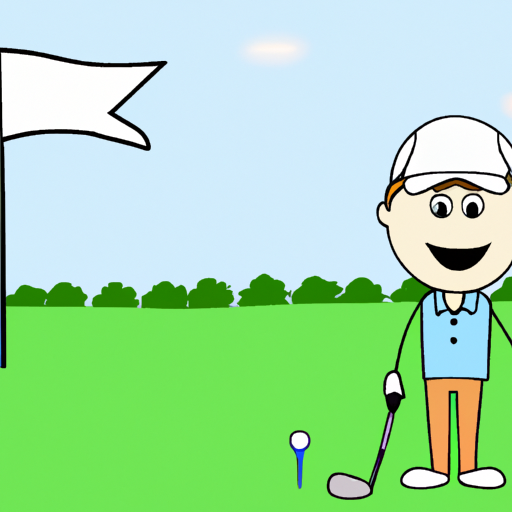 Embrace the mental game of golf - it's a game-changer!
Embrace the mental game of golf - it's a game-changer!What Are the Common Mistakes to Avoid in Golf?
Golf is a game of precision, patience, and practice. But it's also a game where mistakes can easily creep in, affecting your performance and enjoyment of the sport. I've been there, struggling with common errors that seemed to hold me back. Let me share with you my journey through these mistakes, how I overcame them, and what I've learned along the way.
Gripping the Club Too Tightly:
- My Struggle: In my early days of playing golf, I often gripped the club too tightly, thinking that a firm grip would give me more control.
- Solution: I learned to relax my grip, holding the club firmly but not squeezing it. This allowed for a more fluid swing and better control.
- Now: My swing is more natural, and I've found a grip that works for me, enhancing my overall performance.
Ignoring the Short Game:
- My Struggle: I used to focus mainly on my long game, neglecting putting and chipping.
- Solution: I dedicated time to practice my short game, realizing that it's equally important.
- Now: My short game has improved significantly, and I feel more confident on the greens.
Swinging Too Hard:
- My Struggle: I often tried to hit the ball as hard as possible, leading to inconsistent shots.
- Solution: I focused on technique and timing rather than power, finding a rhythm that worked for me.
- Now: My shots are more consistent, and I've learned that accuracy is more important than sheer power.
Not Warming Up Properly:
- My Struggle: I used to jump straight into a game without a proper warm-up, leading to poor performance and even injuries.
- Solution: I started to take time to stretch and warm up before playing, including practice swings and putting.
- Now: I feel more prepared when I step onto the course, and my body thanks me for it!
Playing the Wrong Tees:
- My Struggle: I often played from tees that were too challenging for my skill level.
- Solution: I learned to choose tees that matched my ability, making the game more enjoyable.
- Now: I play from tees that suit me, and I find the game more rewarding and fun.
Ignoring Course Etiquette:
- My Struggle: In my eagerness to play, I sometimes overlooked basic course etiquette.
- Solution: I took the time to learn and understand the unwritten rules of golf, respecting other players and the course.
- Now: I enjoy the game more, knowing that I'm playing it the right way and respecting others.
Using the Wrong Equipment:
- My Struggle: I used to play with clubs that weren't suited to my game, hindering my progress.
- Solution: I invested in a proper club fitting, finding equipment that matched my swing and style.
- Now: My game has improved, and I feel more in tune with my equipment.
Lack of Mental Focus:
- My Struggle: I often lost concentration during a round, leading to unnecessary mistakes.
- Solution: I worked on my mental game, learning to stay focused and positive.
- Now: My mental approach has strengthened, and I play with more confidence and determination.
Not Practicing Enough:
- My Struggle: I used to play sporadically without consistent practice, leading to a stagnant game.
- Solution: I committed to regular practice, setting goals and working on specific areas.
- Now: My game continues to improve, and I enjoy the process of learning and growing.
Ignoring the Weather and Course Conditions:
- My Struggle: I used to ignore the impact of weather and course conditions on my game.
- Solution: I learned to adapt my game to different conditions, understanding how they affect play.
- Now: I'm more adaptable and can enjoy the game in various conditions, appreciating the unique challenges they present.
My journey through these common golf mistakes has been enlightening. I've learned to appreciate the nuances of the game, to work on my weaknesses, and to enjoy the process of improvement. Golf has become more than just a sport to me; it's a metaphor for life, teaching me patience, perseverance, and the joy of continuous learning. By recognizing and overcoming these mistakes, I've not only become a better golfer but also a more resilient and adaptable person in all aspects of life.
Key Takeaways
Golf is a beautiful game that offers endless opportunities for growth and enjoyment. But like any journey, it comes with its challenges and pitfalls. Here are the key takeaways from our exploration of common mistakes in golf:
Common Mistakes
Solutions
Gripping the Club Too Tightly
Relax the grip for a more fluid swing
Ignoring the Short Game
Practice putting and chipping equally
Not Warming Up Properly
Stretch and warm up before playing
Playing the Wrong Tees
Choose tees that match your ability
Ignoring Course Etiquette
Learn and respect the unwritten rules of golf
Using the Wrong Equipment
Invest in proper club fitting
Lack of Mental Focus
Work on mental focus and positivity
Not Practicing Enough
Commit to regular practice and set goals
Ignoring the Weather & Conditions
Adapt to different weather and course conditions
Swinging Too Hard
Focus on technique and timing, not power
Engage with the Golfeaser Community:
- Share Your Stories: We want to hear from you! Share your golfing journey, struggles, and triumphs with us. Your experiences can inspire others.
- Sign Up for the Newsletter: Stay connected with the latest tips, news, and updates from the Golfeaser community. Click here to subscribe.
- Live by the Golfeaser Manifesto: Embrace the values of continuous improvement, respect for the game, and enjoyment of the journey. Golf is more than a sport; it's a way of life.
By recognizing and learning from common mistakes, you can enhance your golfing experience and grow both on and off the course. Join us at Golfeaser, where we celebrate the game, support each other, and strive to be our best selves. Together, we can make golf not just a hobby but a fulfilling and enriching part of our lives. Keep swinging, keep learning, and keep living the Golfeaser way!
Comprehensive FAQ: How to Get Better at Golf
How can I set goals to improve my golf game?
How can I set goals to improve my golf game?
Setting goals is the first step to improving your golf game. Write down specific, measurable goals like hitting a certain percentage of fairways or greens, limiting three-putt holes, or breaking specific score barriers. Reviewing these goals over time will help you track your progress and focus on areas that need improvement.
What role does proper equipment play in golf?
What role does proper equipment play in golf?
Having the right equipment, such as the correct golf clubs and balls, can significantly impact your game. Getting fitted for the proper equipment can enhance your swing and even take strokes off your score. Consider visiting a professional fitter to determine the right clubs for your unique playing style.
How can I experiment with my swing?
How can I experiment with my swing?
Don't be afraid to try new techniques with your golf shots. Experimenting with your swing and making slight adjustments can improve distance and accuracy. Consider scheduling a lesson with a golf professional to explore different approaches.
What drills can help me swing more?
What drills can help me swing more?
Practice is key to improving your golf game. Try new drills like "the worst ball drill" or take 100 practice swings a day at home. Using a heavy weighted club for warm-up can also help with flexibility and provide more torque during the downswing.
How can I focus on fitness for golf?
How can I focus on fitness for golf?
Work on your fitness to prevent fatigue and improve your swing. Walking more, building strength, and stretching, especially your hamstrings, can increase endurance, add power to your drive, and prevent injuries. Exercises like those from Golf Digest can be a great starting point.
How can creating a routine help my golf game?
How can creating a routine help my golf game?
Creating a routine helps build muscle memory and discipline. Following a consistent routine before every shot can help you relax during critical shots and improve your overall game. Practice this routine in all settings to build confidence.
Why is holding my pose after every shot important?
Why is holding my pose after every shot important?
Holding your pose after every shot can reveal insights into your technique. A proper finish position should feel balanced, with your belt buckle facing the target and your back heel off the ground. Adding this tip to your routine can improve ball striking over time.
How can I benefit from playing more practice rounds?
How can I benefit from playing more practice rounds?
Playing more practice rounds replicates the mental and physical experience of competitive golf. Reflecting on your performance and focusing on areas of improvement can help you create a plan to work on specific parts of your game.
How long does it take to become a good golfer?
How long does it take to become a good golfer?
It varies for each individual, but most new golfers can expect to see significant improvement with consistent practice over a few months. The journey to becoming a good golfer is a continuous process, and the time required depends on factors like natural ability, dedication, and the quality of practice.
What are the top ten tips to get better at golf without lessons?
What are the top ten tips to get better at golf without lessons?
Tips to get better at golf without lessons include setting clear goals, practicing regularly, focusing on fitness, experimenting with your swing, using proper equipment, creating a routine, holding your pose after shots, playing more practice rounds, joining a golfing community, and seeking advice from experienced players.
How to get better at golf and improve fast?
How to get better at golf and improve fast?
To improve quickly, combine the strategies of setting goals, getting fitted for proper equipment, experimenting with your swing, practicing more, focusing on fitness, creating a routine, holding your pose, playing practice rounds, joining a golfing community, seeking professional advice, and staying committed to continuous learning.
What are the exercises to get in golf shape?
What are the exercises to get in golf shape?
Exercises to get in golf shape include strength training, flexibility exercises, and endurance workouts. Specific exercises targeting the legs, core, and hamstrings are vital for a powerful golf swing. Following a golf-specific fitness program can lead to better performance on the course.
What is the worst ball drill in golf?
What is the worst ball drill in golf?
The "worst ball drill" in golf is a practice exercise where you set up a scenario, hit two balls, and play the next stroke from the "worst" one. This drill challenges you to improve your consistency and accuracy by always playing from the more difficult position.
